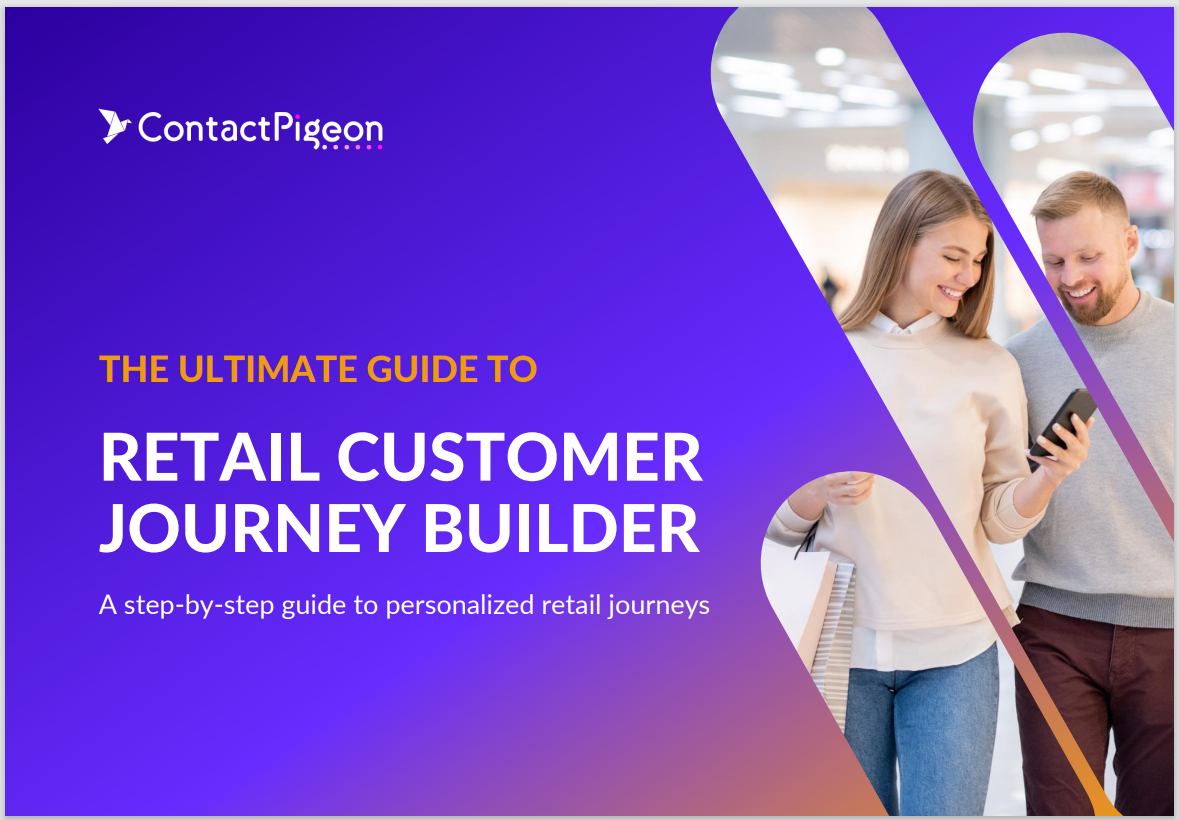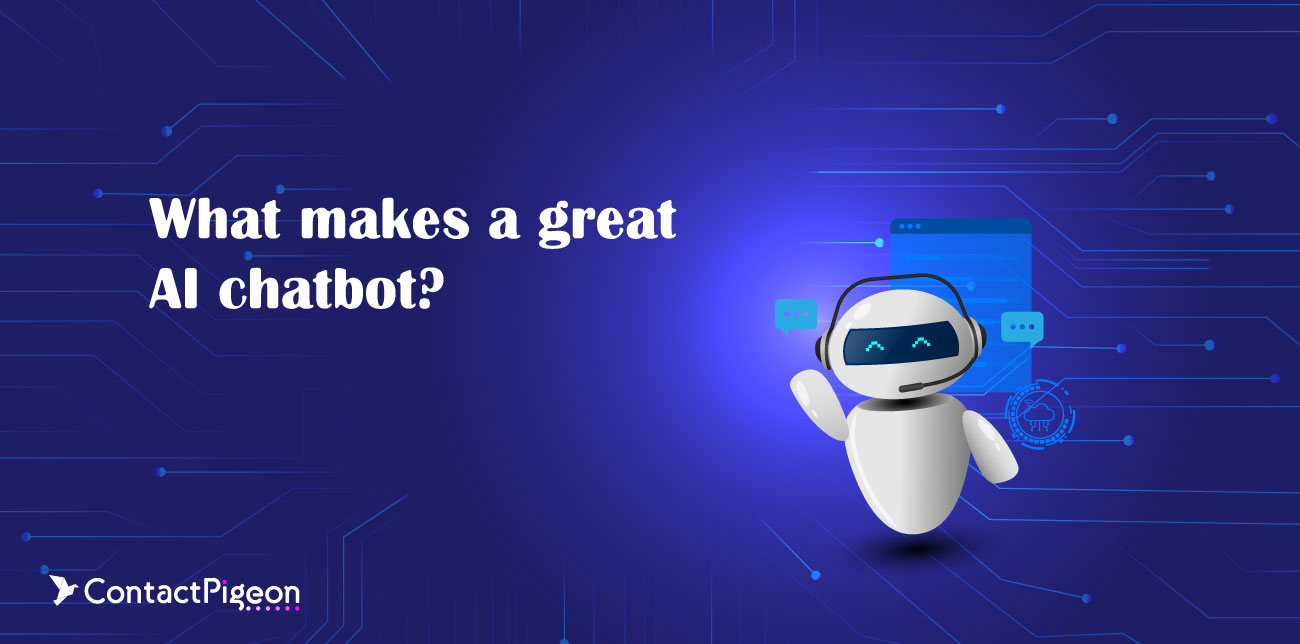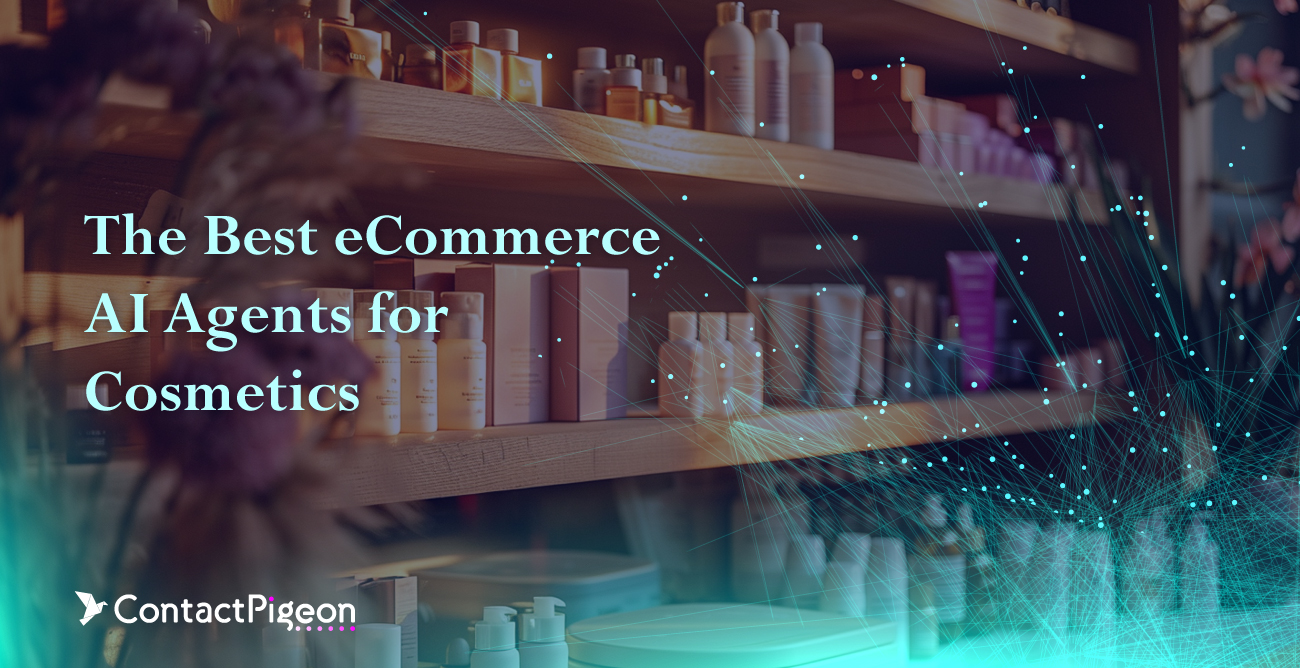AI chatbots have moved from novelty to necessity, standing at the core of how brands deliver consistent, omnichannel customer experiences. The right AI chatbot capabilities can transform how brands scale personalization, resolve customer needs in real time, and capture incremental revenue across digital touchpoints. For CMOs and retail executives, the question is not whether to deploy chatbots, but how to evaluate them as strategic assets. This means looking beyond surface-level features and understanding the blueprint of a high-impact AI chatbot: one that aligns with your data strategy, elevates customer experience, and integrates seamlessly into operational workflows.
Let’s break down the key points
- AI chatbots are now core to omnichannel customer experience and revenue moments — evaluate them as strategic assets, not features.
- Six essentials: NLU, multi-turn conversation, omnichannel deployment, integrations (CRM/ERP/CDP), self-learning & training, compliance & security.
- Use the Capability Maturity Model (Reactive → Automated → Predictive → Adaptive) to benchmark vendors and plan the path to adaptive performance.
- Follow a decision framework (strategy fit, tech fit, budget, roadmap, support) and avoid pitfalls: rigid integrations, no analytics/A/B testing, closed training, weak security, static flows.
- Measure what matters — Resolution Rate, AHT, Funnel Conversion, CSAT/NPS, Abandonment, Intent Accuracy — plus segments, cohorts, and revenue attribution. Consider Menura AI (ContactPigeon’s brand-trained AI agent for retailers) to operationalize at scale.
Key capabilities of a great AI chatbot
Not all AI chatbots are created equal. The difference between a basic automated responder and a high-impact solution lies in its underlying capabilities. The following six areas determine whether an AI chatbot can truly enhance customer experience, support business goals, and scale with your organization’s needs.
#1 Capability: Natural Language Understanding (NLU)
At the foundation of every effective AI chatbot is Natural Language Understanding (NLU), the ability to interpret the meaning, intent, and context behind a user’s words. Unlike keyword-matching bots, NLU-powered systems can process language the way humans naturally speak, including slang, typos, or multi-layered questions. This allows the chatbot to respond in a way that feels more intuitive and personalized, building trust with customers. For example, a shopper typing “I need a jacket for cold rainy weather” can be guided directly to relevant products instead of receiving generic results.
#2 Capability: Multi-turn conversation management
Great AI chatbots don’t just answer one-off queries, they sustain meaningful, multi-step dialogues. Multi-turn conversation management enables the chatbot to remember context within a single interaction and guide the customer through a sequence of related questions. This is crucial for more complex tasks, such as helping a customer compare product options, troubleshoot an issue, or complete a purchase. For instance, when a customer asks about shipping, the chatbot can recall the items in their cart and provide tailored delivery information, rather than forcing them to re-enter details repeatedly.
#3 Capability: Omnichannel deployment

A great AI chatbot doesn’t live in just one channel. It needs to operate seamlessly across your website, mobile app, messaging apps like WhatsApp and Messenger, and even SMS. This omnichannel presence ensures customers can connect with your brand on their preferred platform, without losing context. When powered by unified customer data, the chatbot can recognize an individual across touchpoints and deliver a consistent, personalized experience, whether they start a conversation on your website and finish it later via mobile chat.
#4 Capability: Integration with business systems (CRM, ERP, CDP)
To truly add value, an AI chatbot must connect with the systems that run your business, from CRM and ERP platforms to your retail customer data platform (CDP). By pulling and pushing data from tools like Salesforce, HubSpot, or Shopify, the chatbot can do much more than answer FAQs. It can check order status, recommend products based on past purchases, qualify leads, or update customer records in real time. This kind of integration turns the chatbot into a powerful operational hub, not just a support channel.
#5 Capability: Self-learning and training
An AI chatbot should never remain static, it must continuously learn and improve. Self-learning and supervised training allow the system to refine its responses based on real customer interactions. Advanced platforms provide dashboards that surface user intent data, highlight gaps in understanding, and capture direct feedback. These insights create a feedback loop where marketing and CX teams can fine-tune conversation flows, train the model on new scenarios, and steadily improve accuracy. The result is a chatbot that gets smarter, more relevant, and more aligned with customer needs over time.
#6 Capability: Built-in compliance & security
Trust is non-negotiable. A great AI chatbot must embed compliance and security from day one, covering frameworks like GDPR, HIPAA, and CCPA. Beyond regulatory requirements, robust security measures, such as user authentication, end-to-end encryption, and data masking, protect sensitive information at every stage of the conversation. For retailers handling large volumes of personal and payment data, these safeguards ensure that the chatbot is not only effective but also reliable and safe, reinforcing brand credibility with every interaction.
Before going live, make sure you’re following the right strategy. Explore our Chatbot Best Practices for Omnichannel Retailers, built for CMOs and CX leaders who care about performance, not just implementation.
Chatbot Capability Maturity Model: From reactive to adaptive
To help executives benchmark their current solutions, we can view AI chatbot evolution through four maturity stages. Each stage represents a step up in sophistication, from basic, rule-based responders to adaptive, self-learning systems that drive measurable business impact.
| Maturity Stage | Description |
|---|---|
| Level 1: Reactive | Scripted, rule-based bots that answer simple FAQs. Useful for basic support; limited personalization and scalability. |
| Level 2: Automated | Handles routine tasks (order status, bookings) with consistent responses across channels. Efficiency improves, but context depth is still limited. |
| Level 3: Predictive | Anticipates needs using data and context. Proactively suggests products, nudges abandoned carts, and personalizes recommendations. |
| Level 4: Adaptive | Self-learning and continuously improving. Fully integrated with business systems; delivers secure, human-like, context-rich interactions across every channel. |
Optional bonus: Emerging features to watch
While the six core capabilities form the foundation of any high-performing AI chatbot, forward-looking CMOs should also keep an eye on emerging features that signal where the technology is heading:
- Emotion detection & sentiment mapping: Advanced models can gauge customer tone and emotion in real time, allowing brands to tailor responses with empathy, for instance, prioritizing frustrated customers for faster resolution.
- Multilingual NLP with real-time switching: Chatbots that fluidly shift between languages mid-conversation eliminate friction in global markets and create a more inclusive customer experience.
- Voicebot & multimodal chat: Beyond text, the next generation of AI chatbots will incorporate voice, visuals, and even interactive product demos, expanding engagement possibilities across channels.
- Seamless agent handoff: The ability to transfer a conversation from AI to a human agent, without losing context or forcing customers to repeat themselves, ensures efficiency without sacrificing the human touch.

Build smarter customer journeys and activate AI-driven personalization for repeat purchases.
How to evaluate AI chatbot vendors
Selecting an AI chatbot is less about comparing features and more about aligning the solution with your broader business strategy. CMOs should weigh the following five dimensions before committing to a platform:
- Strategic alignment: Does the chatbot directly support your customer experience goals and data strategy?
- Technology fit: Can it integrate with your current martech stack (CRM, CDP, ERP) without heavy customization?
- Budget: Are both upfront costs and ongoing expenses (training, updates, support) sustainable at scale?
- Vendor roadmap: Is the provider continuously innovating with emerging capabilities like multimodal AI and sentiment detection?
- Support & success model: Beyond deployment, does the vendor provide hands-on onboarding, training, and account management to ensure adoption?
Suggested evaluation questions for vendors
When assessing providers, CMOs and their teams should press beyond demos and marketing slides with targeted questions such as:
- What integrations are native vs. which will require custom development?
- How does the AI learn and improve over time?
- Can we configure and control the tone, style, and personality of the chatbot to match our brand voice?
- What metrics (e.g., engagement, conversion, CSAT) can be tracked, and can these be segmented by audience or journey stage?
Strategic pitfalls in vendor selection

Even when evaluating platforms with strong AI chatbot capabilities, many organizations stumble by overlooking critical gaps that only surface after deployment. To avoid expensive missteps, CMOs should be mindful of these common pitfalls:
- Lack of integration flexibility: A chatbot that can’t easily connect with your CRM, CDP, or eCommerce platform will quickly become a silo rather than a growth driver.
- No analytics or A/B testing: Without performance insights and experimentation tools, you’ll struggle to optimize conversations or prove ROI.
- Closed training models: If you can’t fine-tune how the chatbot learns, it will remain static and fail to adapt to your brand’s evolving needs.
- Poor security documentation: Gaps in compliance or unclear protocols around data handling put both your customers and your reputation at risk.
- Static conversation design: Chatbots that rely only on rigid scripts create frustrating customer experiences and limit opportunities for personalization.
Before you decide, review our AI Chatbots Checklist.Our AI Chatbots Checklis gives you the 10 essential questions every CMO should ask, from data security to scalability and beyond.
Measuring AI chatbot effectiveness: KPIs that matter
Deploying advanced AI chatbot capabilities is only the first step — the real question is whether they move the needle on customer experience and revenue. CMOs should track a set of core performance indicators that reveal both efficiency gains and customer impact:
- Resolution Rate: The percentage of inquiries resolved without human intervention — a direct measure of chatbot effectiveness.
- Average Handle Time (AHT): How quickly customer issues are addressed. A well-trained AI should reduce AHT while keeping the experience human-like.
- Funnel Conversion Rate: The chatbot’s ability to move users from conversation to action, such as purchases, sign-ups, or bookings.
- CSAT / NPS: Customer satisfaction and loyalty scores tied directly to chatbot interactions.
- Abandonment Rate: The percentage of conversations that end before resolution, often signaling gaps in conversation design or escalation flow.
- Intent Detection Accuracy: How well the chatbot interprets customer requests, a leading indicator of natural language understanding maturity.
Advanced insights
To push beyond surface-level metrics, executives should also focus on advanced measurement practices:
- Segment-based analysis: Compare performance across customer cohorts (e.g., first-time visitors vs. loyal customers) to uncover where the chatbot drives the most value.
- Cohort testing: Run A/B or time-based experiments to measure how conversation design changes influence conversion and satisfaction.
- Revenue attribution: Link chatbot-assisted journeys to incremental revenue, clarifying its role in the broader omnichannel mix.
How can AI chatbot capabilities impact key marketing KPIs?
The right capabilities directly influence customer satisfaction (CSAT), lead qualification speed, conversion rates, and customer lifetime value (CLTV). For instance, a bot with real-time data access can personalize CTAs, while a poorly integrated one may drop leads.
What’s the ROI of investing in an enterprise-grade AI chatbot?
According to IBM, AI chatbots can reduce customer service costs by up to 30%. Beyond savings, they also increase lead capture, drive 24/7 engagement, and accelerate sales cycles. ROI depends on integration depth and capability maturity.
How does chatbot personalization actually work at scale?
Through integrations with CRMs, CDPs, and behavioral data sources. A scalable chatbot identifies returning users, purchase history, and preferences to craft 1:1 experiences — automatically and in real time.
Should the chatbot live under marketing, CX, or IT ownership?
Ideally, cross-functional. Marketing owns the voice and conversions, CX ensures consistency, and IT secures data and infrastructure. Best-in-class companies form a chatbot steering committee with shared KPIs across departments.
Your AI chatbot strategy is a brand strategy
The capabilities you prioritize in an AI chatbot are not just technical checkboxes, they define the very experience your customers associate with your brand. From personalization to compliance, from resolution rates to omnichannel orchestration, every capability translates directly into how customers perceive your value.
For CMOs, this means chatbot strategy is brand strategy. Selecting the right platform determines whether you can retain customers at scale, differentiate in crowded markets, and build a foundation for long-term growth. With Menura AI, ContactPigeon’s brand-trained AI agent for retailers, you gain a solution designed specifically to elevate customer experience, drive conversions, and adapt to the unique voice of your brand.
Book a free demo with our team and explore how ContactPigeon’s AI chatbots can future-proof your marketing stack.




